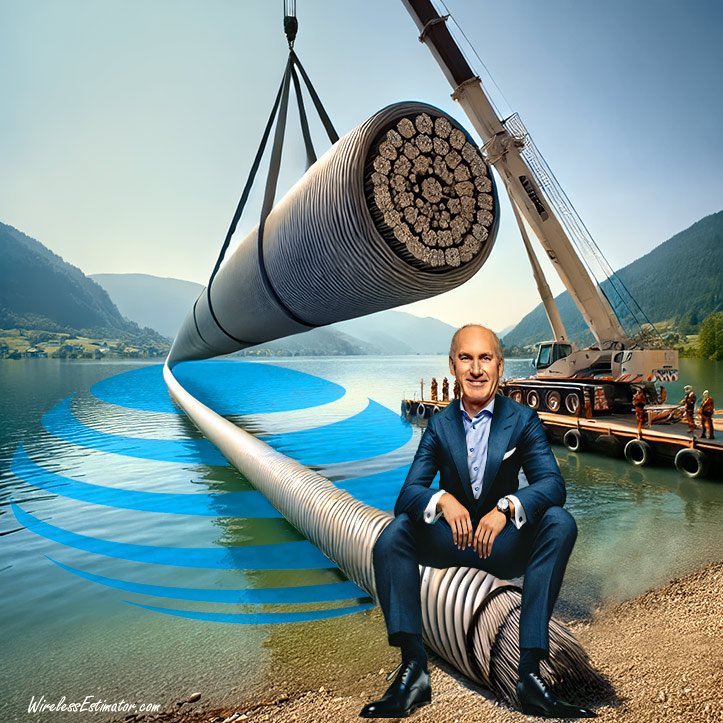
50 TONS OF LEAD SINKERS—AT&T CEO John Stankey has approved removing 107,000 pounds of decades-old lead cables from Lake Tahoe by May 26, 2025, possibly as early as November 30, 2024. Removing the six miles of cables is estimated to cost upwards of $2 million. Each foot of the submerged cable contains approximately 3.39 pounds of lead.
AT&T has agreed to remove approximately 107,000 pounds of lead cables that have been submerged in Lake Tahoe for decades as part of a settlement announced last week.
The decision follows a lawsuit filed by the California Sportfishing Protection Alliance (CSPA) in 2021, which claimed that the cables were leaching toxic lead into the lake, posing risks to the environment and human health. Initially laid by the Pacific Bell Telephone Company over a century ago and later inherited by AT&T, the cables span about six miles across the lake’s floor.
Scientific investigations revealed elevated levels of lead in the lake’s water and sediment near the cables, with biofilms—algae that serve as a food source for fish—showing concentrations 67,000 times higher than normal. These findings raised concerns about the lead’s potential impact on the lake’s aquatic ecosystem.
“This is a monumental win for the environment, the communities who drink Lake Tahoe water, and the millions of annual visitors,” said Chris Shutes, Executive Director of CSPA, in a statement. “AT&T’s commitment to removing the cables marks a significant victory in our ongoing fight to protect Lake Tahoe.”
CSPA’s lawsuit alleged that the abandoned cables violated California’s Proposition 65, a law designed to protect drinking water from toxic chemicals, as well as the federal Resource Conservation and Recovery Act (RCRA). After an initial settlement in 2022, AT&T resumed litigation to challenge CSPA’s claims but ultimately agreed to remove the cables under the current settlement.
Each foot of the submerged cable contains approximately 3.39 pounds of lead. With six miles of cables underwater, the total lead content amounts to 107,000 pounds. CSPA’s investigation found that the cables were deteriorating due to environmental factors like wind-caused currents and anchor strikes, further exacerbating the release of toxic lead.
AT&T has committed to starting the removal process to complete the project by November 30, 2024. If delays occur, the final deadline for removal is May 26, 2025. Licensed professional operators, under the supervision of multiple regulatory entities, will handle the extraction, which is estimated to cost upwards of $2 million—an expense AT&T has agreed to cover.
Lake Tahoe, known for its crystal-clear waters and status as an Outstanding National Resource Water, has long been considered one of the nation’s most iconic natural treasures. With few other pollution sources in the lake, the discovery of such high concentrations of lead from the cables was alarming to environmental advocates.
The court has granted a 45-day period before final approval is given for the removal to begin, meaning efforts could be delayed by factors such as weather. Still, the environmental community is hopeful that the project will be completed within the proposed timeline, bringing a long-awaited resolution to this environmental challenge.

















